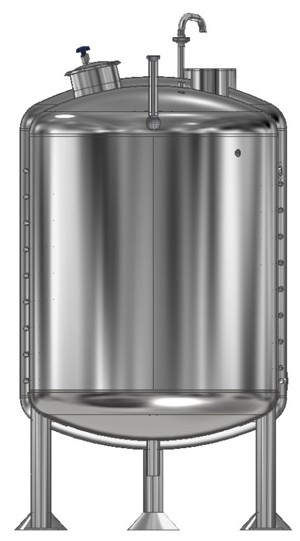Online Exclusive: Product configurator saves Australian pressure vessel fabricators from last minute hassle
After Cyclone Debbie wrecked all the major ports and mines in Queensland, Australia, volumes of coal exports have hit rock bottom. The aftermaths of the cyclone have delayed shipments of coal across the globe, causing a sharp rise in steel prices. It may seem to be merely another drastic change in commodity prices to every commoner in Australia, but to the pressure vessel fabricators, it’s a roadblock to profits.
Pressure vessel fabricators already face multiple challenges in meeting customers’ demands with their custom designs and strict regulatory compliance in delivering high-risk products. Customize designs of pressure vessel and storage tanks and the spatial arrangements they have at their location cause enough slowdowns in engineering lead time to fabricators.
On top of these factors, deadlines are always there to be met—which if ignored will add to the costs. With all of these, delays and this sharp rise in steel prices have only added to their worries.
In such a case scenario, fabricators tend to find ways for reduced material scrap, timely completion and cost-effective processes to make all the ends meet, while they also make a brand value with a good reputation amongst their customers.
New normal of design automation. To touch the zenith of all the requirements, what pressure vessel fabricators need to do is to get rid of redundant tasks of repetitive designs. They should focus on directly generating quick and efficient fabrication drawings, so orders can be completed before the deadline, without any additional delays.
Having said this, it is well known that 3D CAD has become the untrendy, as it still involves repetitive designs every time. Design automation with a product configurator is the “new normal” for fabricators looking to eliminate the grunt work, stay profitable and maintain a brand value. Developing a logical set of rules and applying it to the native and basic 3D CAD model to expedite design cycle, reducing the entire engineering lead time, will solve a majority of problems.
ETO—trend to follow. A growing need to order the exact required quantity of raw material has arisen under the light of rising steel prices to bank on profits by avoiding any scrap. Another alternative for boosting profits that fabricators look for is to fabricate as the orders come in, known as built-to-order or engineer-to-order [ETO].
By developing a product configurator from a basic CAD model will essentially reduce reworks, man-hours needed and gives easy access to track products from manufacturing to delivery. Autodesk’s Inventor with iLogic (FIG. 1) is an efficient means to develop product configurator and save pressure vessel fabricator from last minute hassle that arises out of custom fabrication and the pressure to meet deadlines. It serves as a platform for designing parts, assembly drawings and fabrication drawings, which gives manufacturers an ability to understand and configure the product designs upfront.
This option of design automation will not only accelerate the process, but also follows a standard approach to practice ETO. Since each product is tracked, fabricators can keep a close check on inventory, and hence, have a controlled fabrication. A logical set of rules developed in programming languages, such as Visual Basics or .net, along with a CAD platform will give a combination that could potentially streamline the design process and churn out high-quality end products.
Product configurator will boost profits. From basic 3D CAD models and a logical set of rules, Autodesk’s Inventor allows the pressure vessel design engineer to automate segments during the entire design process. Moreover, these mini rules of logic will manipulate parameters, such as properties, features and components in the CAD model prepared in inventory as per the customer’s specified configuration. With iLogic, the biggest advantage is that they aren’t restricted to a particular design.
A typical Inventor interface will ask the user to input characteristics, such as tank type, its purpose, other geometrical dimensions, volume, type of coil, whether the customer needs a manhole, etc. The product configurator feature will ask for job number of parts in the assembly, volume selection and connection size for accessories on the main body, etc. and simultaneously display all the changes in model for user’s referral.
The catch with a product configurator, is it allows selection of dimensions with selected increments and will show an error message if the values are wrong or non-compatible. Also, it has an added advantage of boundary limits so that it prevents the user from selecting any out of the range (non-permissible) values.
Based on these input parameters, a customized CAD model can be prepared, which will directly generate BOMs, accurate quotes and fabrication drawings. Moreover, it will generate a CAD model simultaneously, as per the input characteristics by the user to give a comprehensive idea through 3D design. Together, a product configurator will reduce engineering lead time and expedite the entire custom fabrication process.
Conclusion. It is said, “adversities bring out the best solutions and capabilities.” The aftermath of Cyclone Debbie has brought a considerable number of adversities to pressure vessel fabricators. Only a smart solution like a product configurator will rescue fabricators from rising costs and a strong desire to keep up market reputation.







Comments